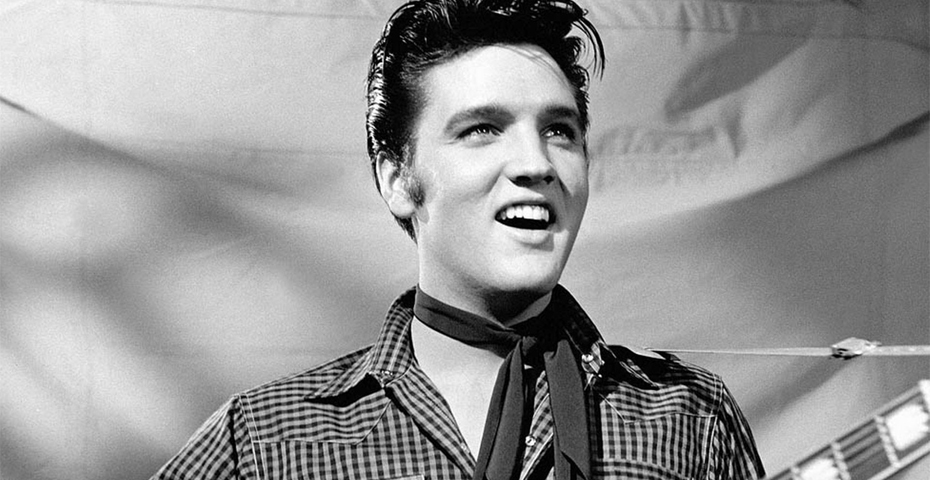Elvis Presley: a cultural icon who left us with musical masterpieces, Can’t Help Falling in Love, Hound Dog, Jailhouse Rock, and many more that are familiar to us even decades after his death. He is the undisputable King of Rock n’ Roll. Throughout his career, Presley’s talents and good looks made him beam like the sun and he was worshipped by many across the globe. When he met his untimely death, his fans were left in disbelief and devastation. He had a bright future ahead of him, which left us with one question—how did it all end?
Below, we dive into the early life and final moments of Elvis Presley and his legacy that continues to impact us today.
Humble beginnings
Although dubbed as a King, the early childhood of Elvis Aaron Presley was not one with silk stockings and silver spoons. Presley graced the world amidst The Great Depression on the 8th of January 1935 to parents, Vernon and Gladys Presley, who were barely scraping by. He would have been an older brother to an identical twin, Jesse Garon Presley, who unfortunately emerged stillborn.
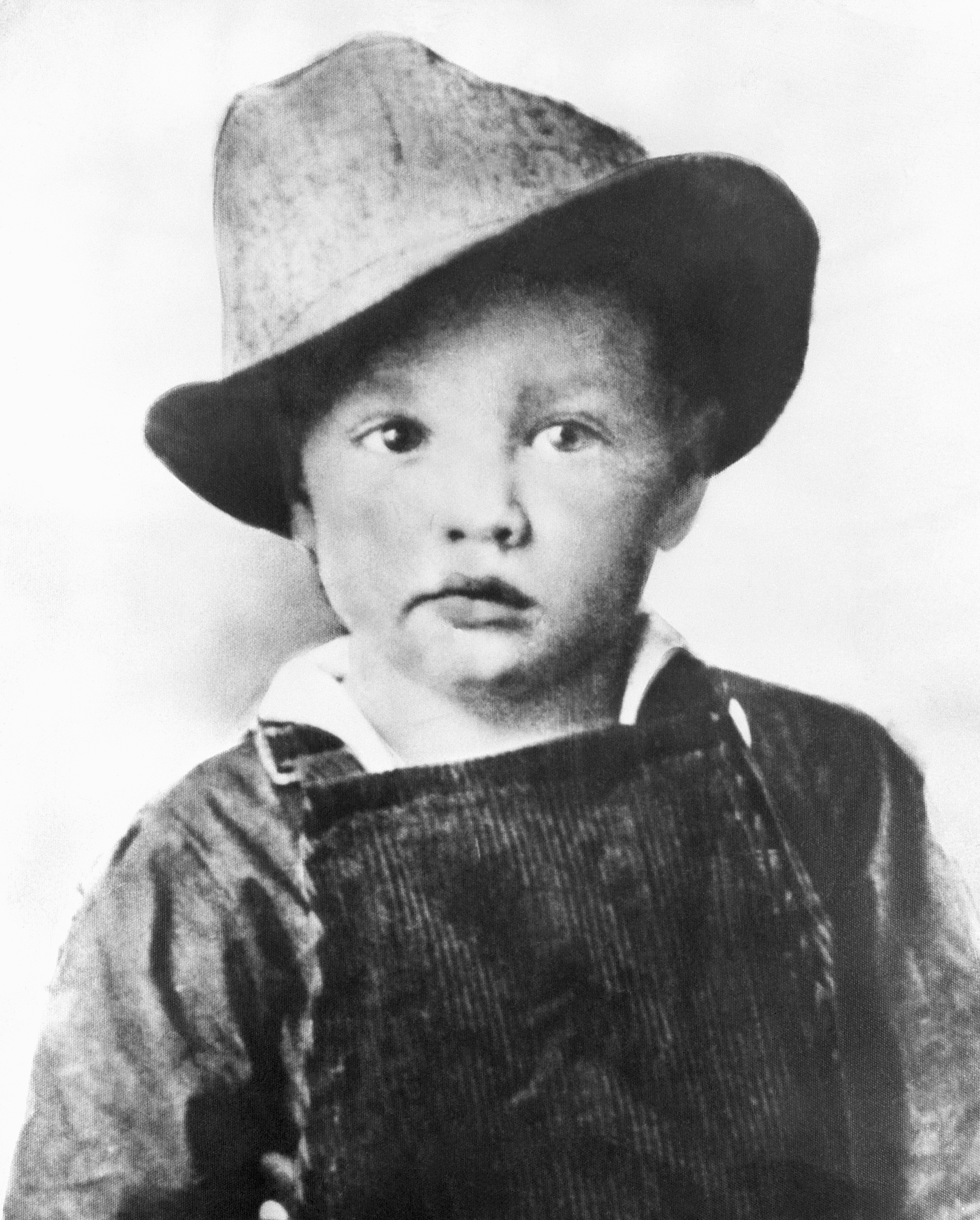
The complications of their birth led Presley and his mother to death’s door and the two were immediately rushed to Tupelo Hospital where they managed to survive. Although Gladys Presley was able to live to raise her only son, the shock of losing a child had left a permanent scar on her, making her ferociously overprotective of Presley throughout her motherhood. However, Presley’s mother was not able to protect him from the burdens of their financial deprivation.
The Presley family resided in the small town of East Tupelo where it was known to be one of the roughest places in Mississippi and a haven for poor sharecroppers and factory workers. There, the family attended the Assembly of God Church where gospel music became an important influence on Presley.
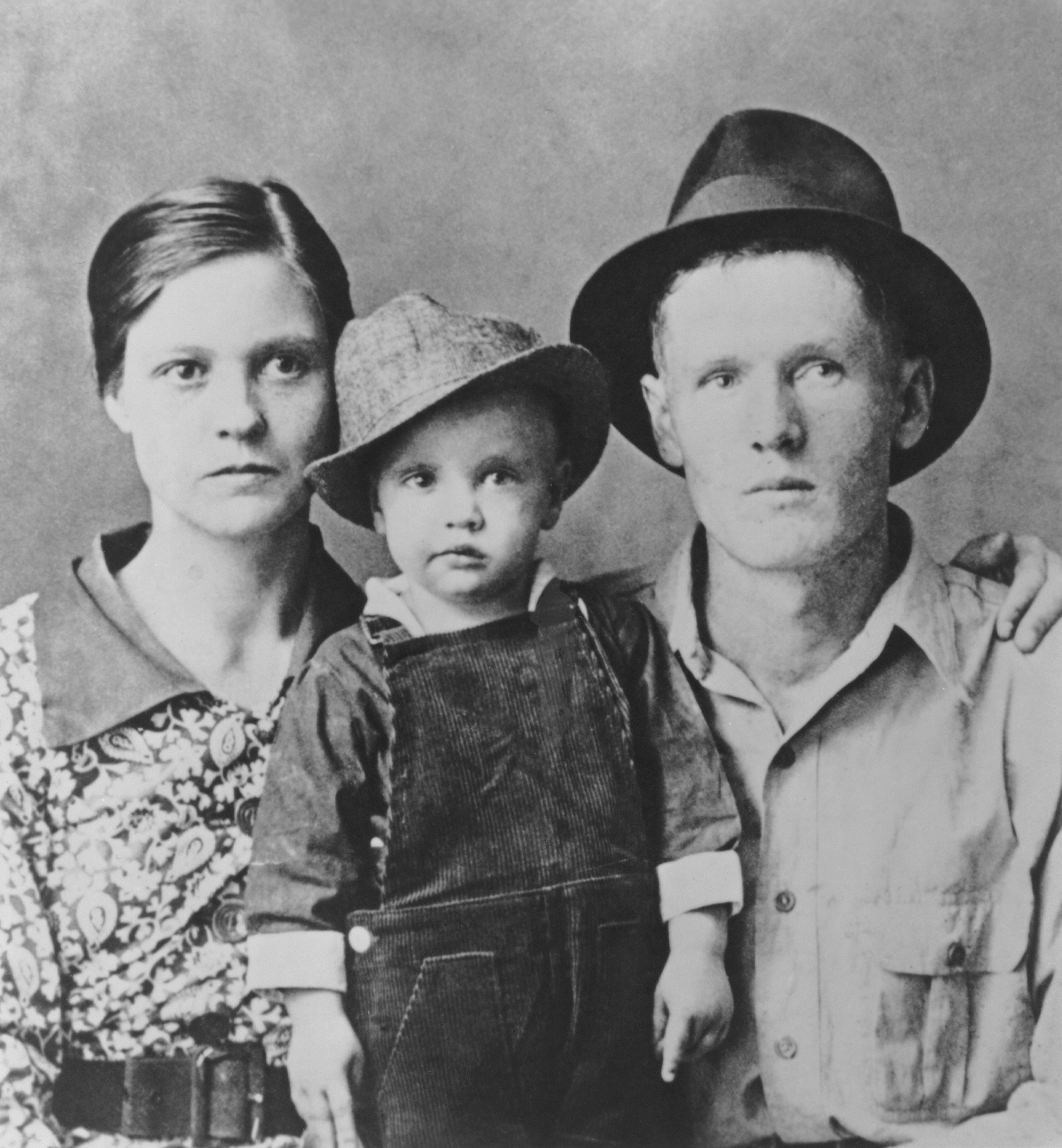
Vernon Presley worked any odd jobs that came along and his meagre resources could only afford the poverty-stricken family a humble abode of a two-room shotgun shack without electricity and indoor plumbing. Their penurious circumstances forced them to rely on welfare to pay the doctor who delivered Presley, and their neighbours who provided them with diapers. Shockingly enough, this was their financial highpoint.
On the 16th of November 1937, Vernon Presley was indicted for forging a $4 check that led to the repossession of the Presley family home. Following the repossession, three-year-old Elvis Presley and his mother moved from house to house as they painfully waited for his father’s return. In 1939, Vernon Presley received an early release for good behaviour but life did not change for the Presley family, they continued life in poverty as they bounced from rental homes and public assistance housing. Eventually, Elvis Presley began first grade in the fall of 1941 at the East Tupelo Consolidated School.
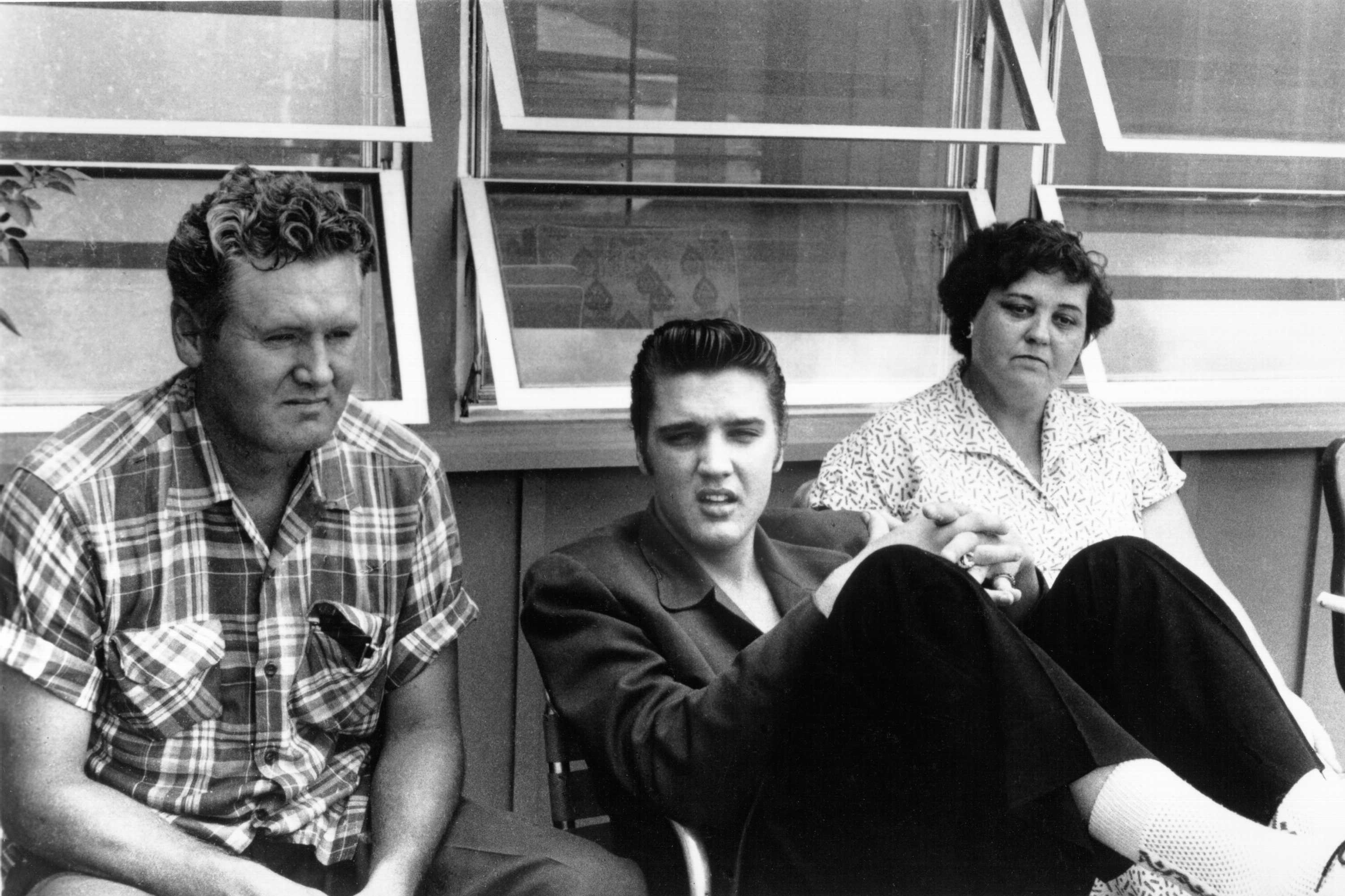
On Presley’s 11th birthday, his mother had gifted him his first guitar. According to the store owner, young Presley wanted a rifle but was convinced to make do with a guitar as his mother was heavily against the idea of him having a weapon (she could not afford it, regardless). Unbeknownst to Presley at the time, his new musical companion would create the legend we all know of today.
Rise to stardom
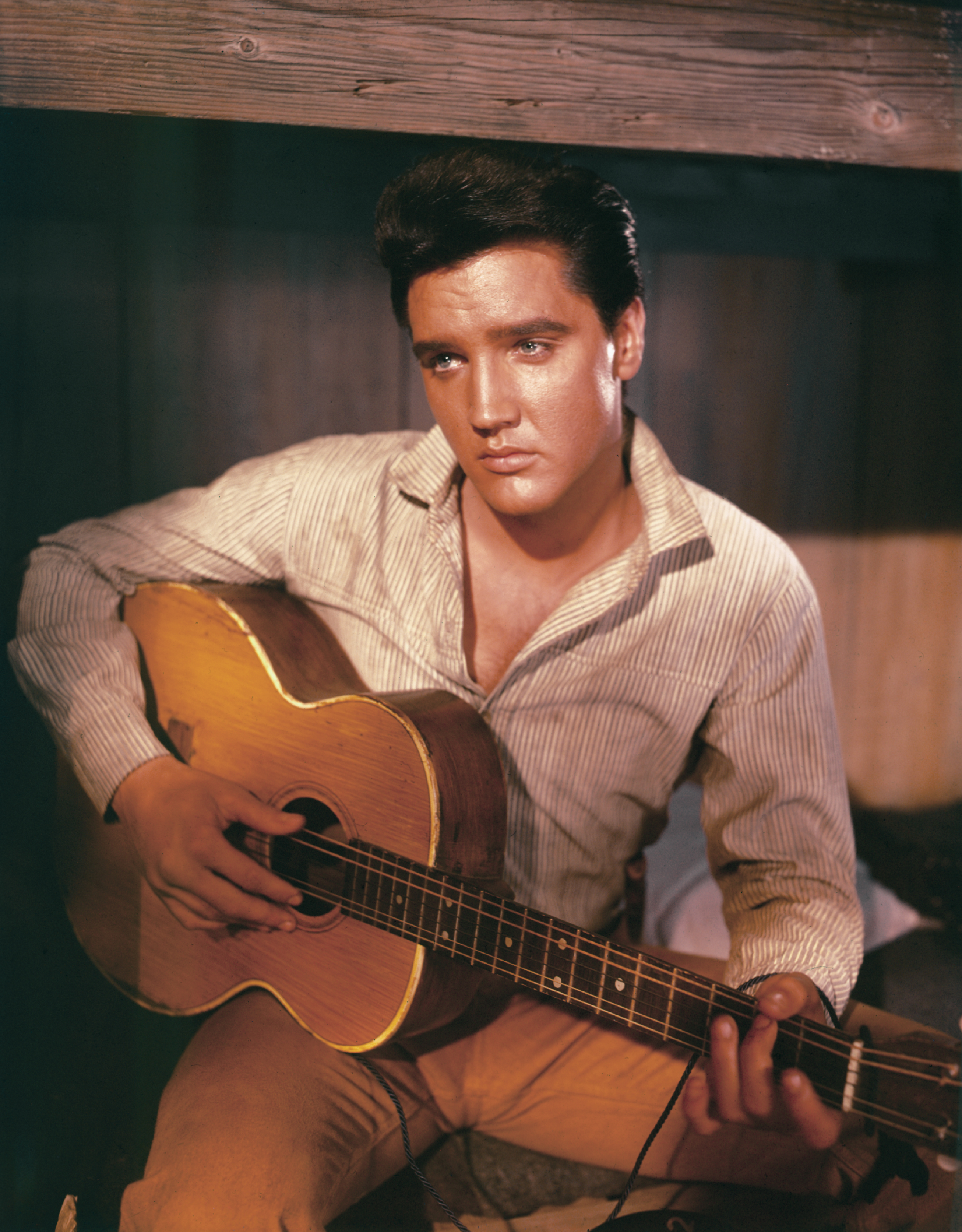
The King of Rock n’ Roll had his first taste of musical success after he had won his high school talent show where he sang the country song, Keep Them Cold Icy Fingers Off Of Me by The Stanley Brothers, and Till’ I Waltz Again With You by Teresa Brewer as an encore after receiving a huge round of applause. His performance left his schoolmates astonished by his vocal talents as many of them were not even aware that Presley sang. In 1953, the soon-to-be star graduated with musical dreams and with his talents, his future was promising. Over a month after graduating, Presley scored his first demo record at Sun Studio and was later taken under the wing of Sam Phillips, the owner of the record label. A year later, Presley released his first single, That’s All Right.
When 1955 came along, 20-year-old Elvis Presley had become somewhat of a musical star as he began to develop a fanbase drawn by his eccentric musical style, provocative gyrating hips, and of course—his good looks. Although many parents thought of Presley as inappropriate, something about the way he swayed his hips and his cool-boy demeanour sent teenage girls wild.
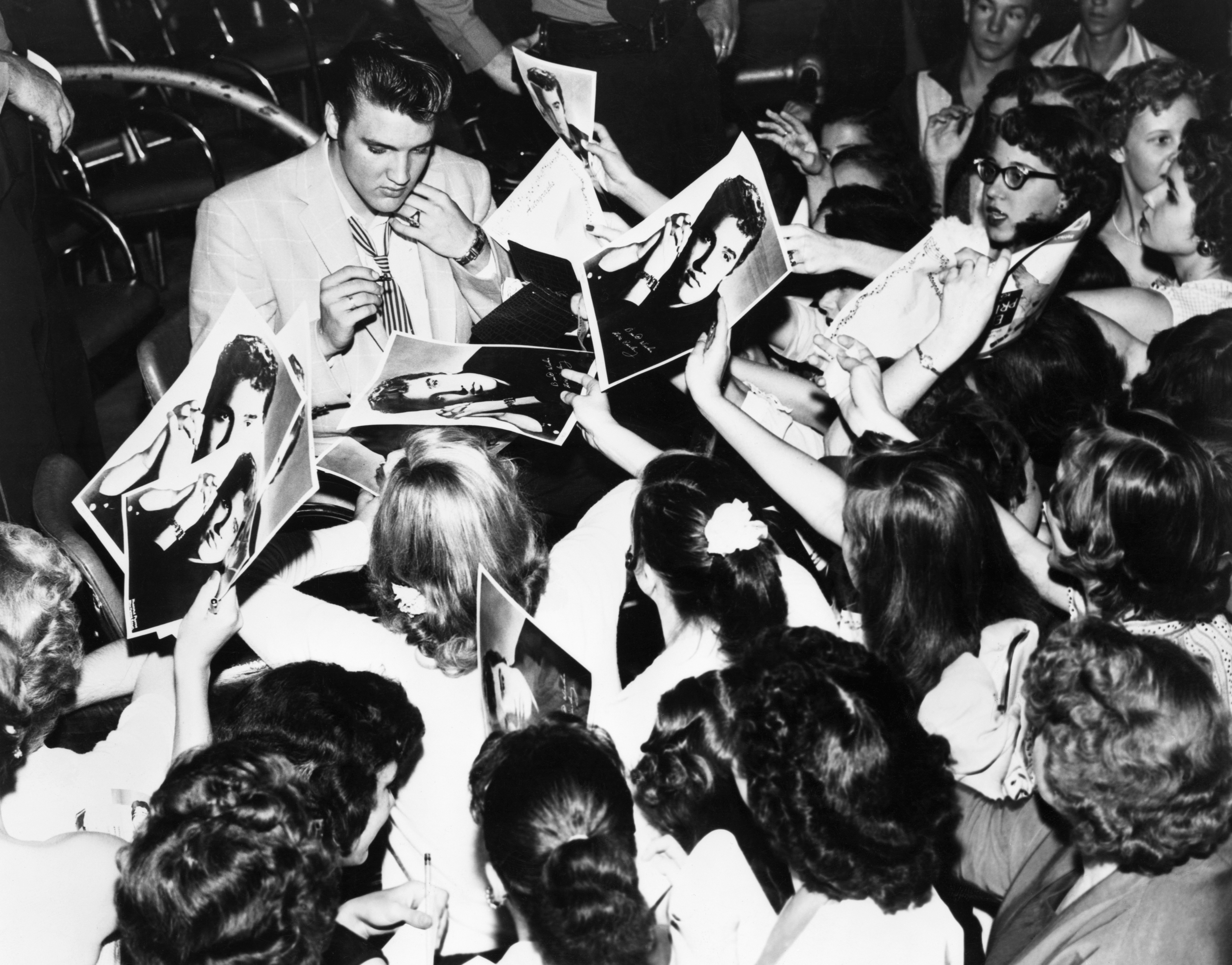
In the same year, Presley signed with RCA Records and scored his first number one single with the iconic Heartbreak Hotel, as well as his first number one album, Elvis Presley. He later signed his first movie contract with Paramount Pictures—all in one year. Presley was on a roll, and his achievements only came piling. Not long after, Presley was everywhere.
To put his success into perspective, an outraged TV show host, Ed Sullivan, had declared he would never have Presley on The Ed Sullivan Show in early 1956. By September, Presley made his debut appearance on the show, bringing in a whopping 60 million viewers and 82 per cent of the television viewing audience. He returned to make his second and third appearance on the show where he took the stage with his big hits Hound Dog, Don’t Be Cruel, and Love Me Tender. Presley was undeniably irresistible, and they couldn’t get enough of him.
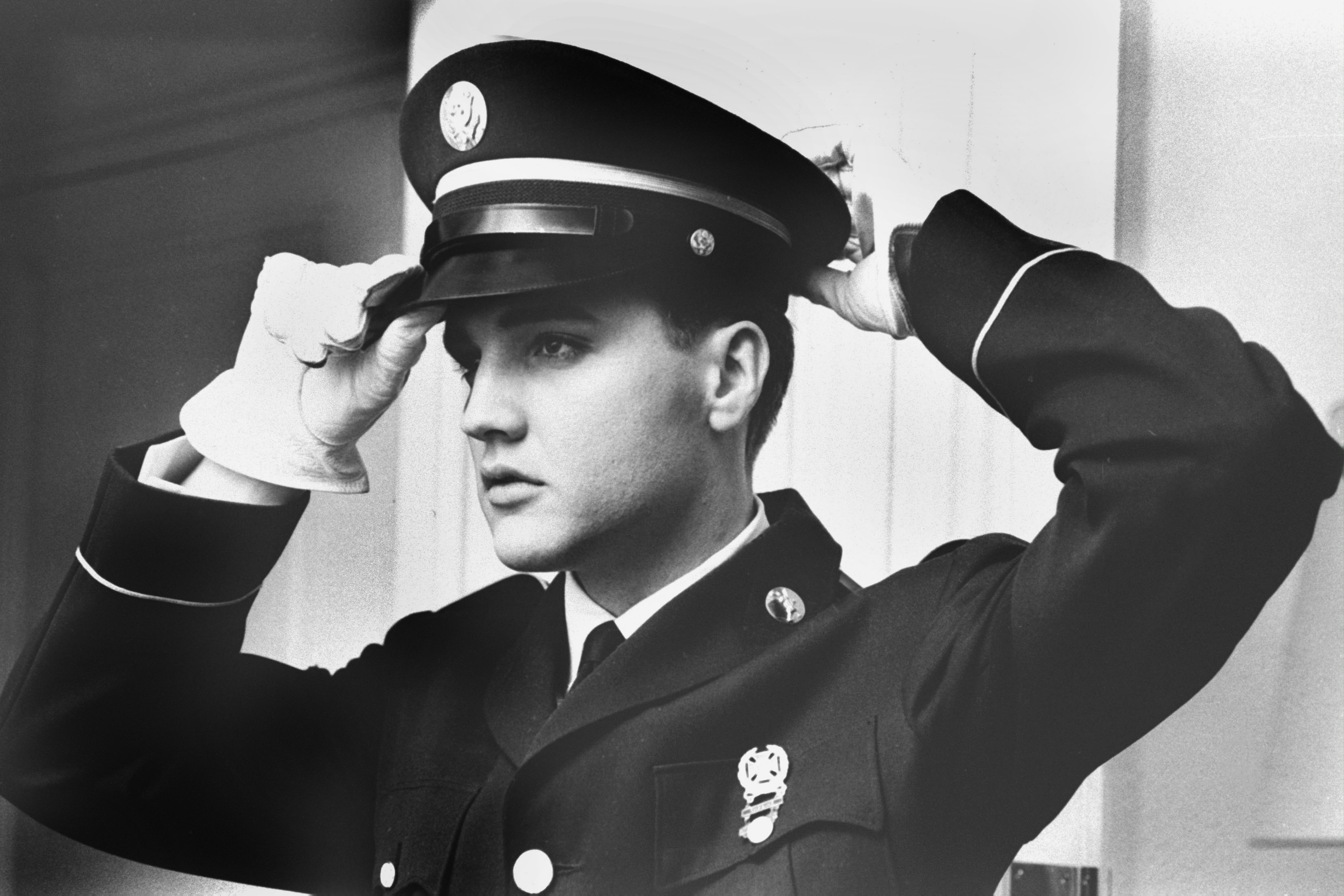
In 1957, the beloved icon received his draft notice and was eventually sent to serve in Germany for over a year and a half. However, he was struck with grief after his mother had died shortly before Presley left for Europe. Deeply saddened by her death, Presley’s spirits lifted after meeting a young teenager named Priscilla Beaulieu while serving in Germany. Romance sparked between the pair and they later got married on the 1st of May 1967 in Las Vegas, Nevada.
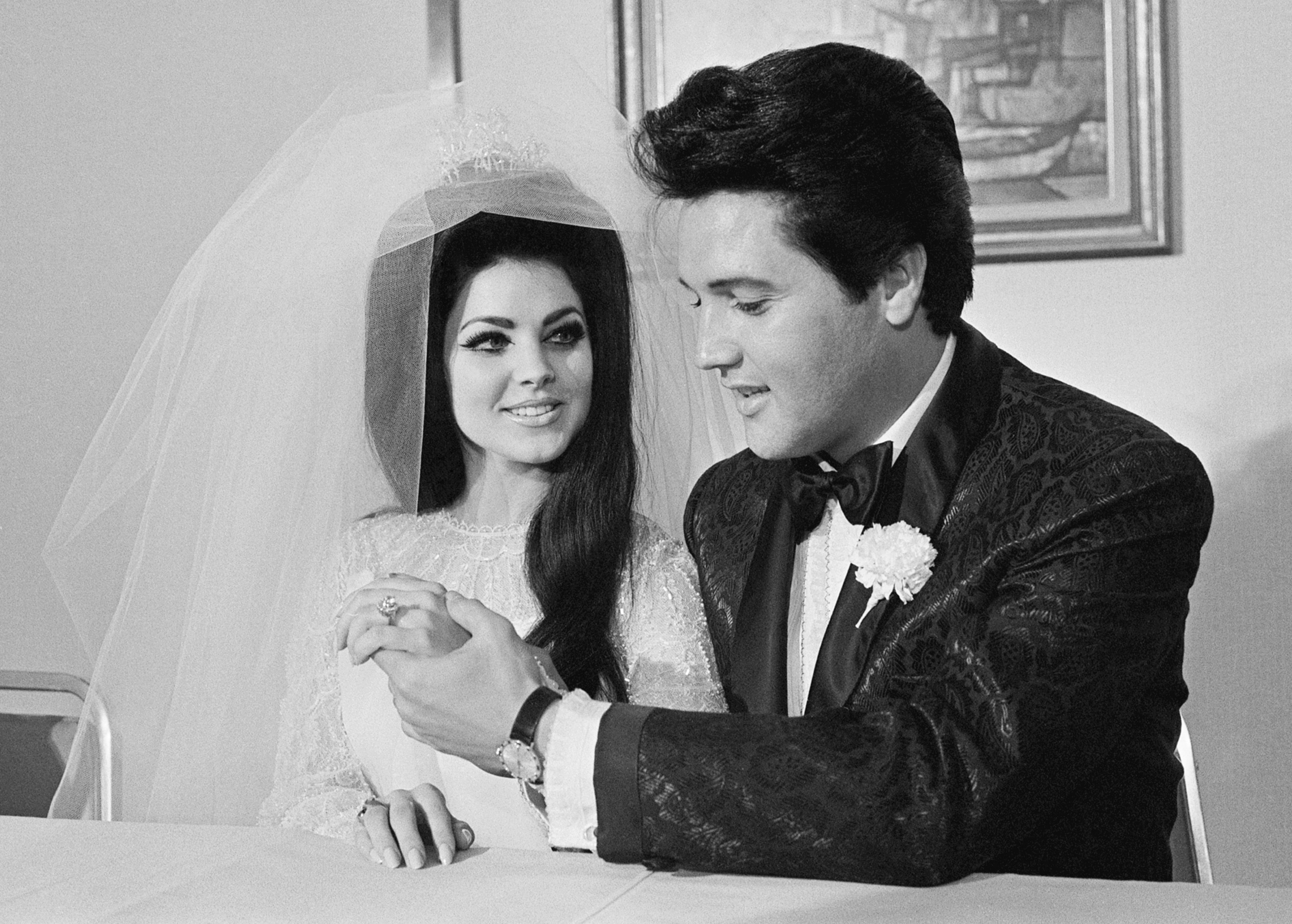
After leaving the army in 1960, an illustrious career awaited him. Wasting no time, the star was once again topping the charts with the soundtrack for a film he starred in, GI Blues, and he continued to show off his swagger through music and films. In early March of 1961, Presley had flown to Los Angeles to begin the production of his next film, Blue Hawaii. After filming was over, he buckled down to record the songs that would later become the film’s soundtrack. Blue Hawaii became his highest-grossing film at the box office and was nominated for Best Written American Musical in 1962 by the Writers Guild of America.
Clearly, the film industry was not an exception for Presley’s achievements. He starred in a total of 31 feature films as an actor and two theatrically released concert documentary films, most of which received major financial success. For several years, Presley was one of Hollywood’s highest paid actors and two of his critically-acclaimed films, Jailhouse Rock and King Creole, have become classics of their era.
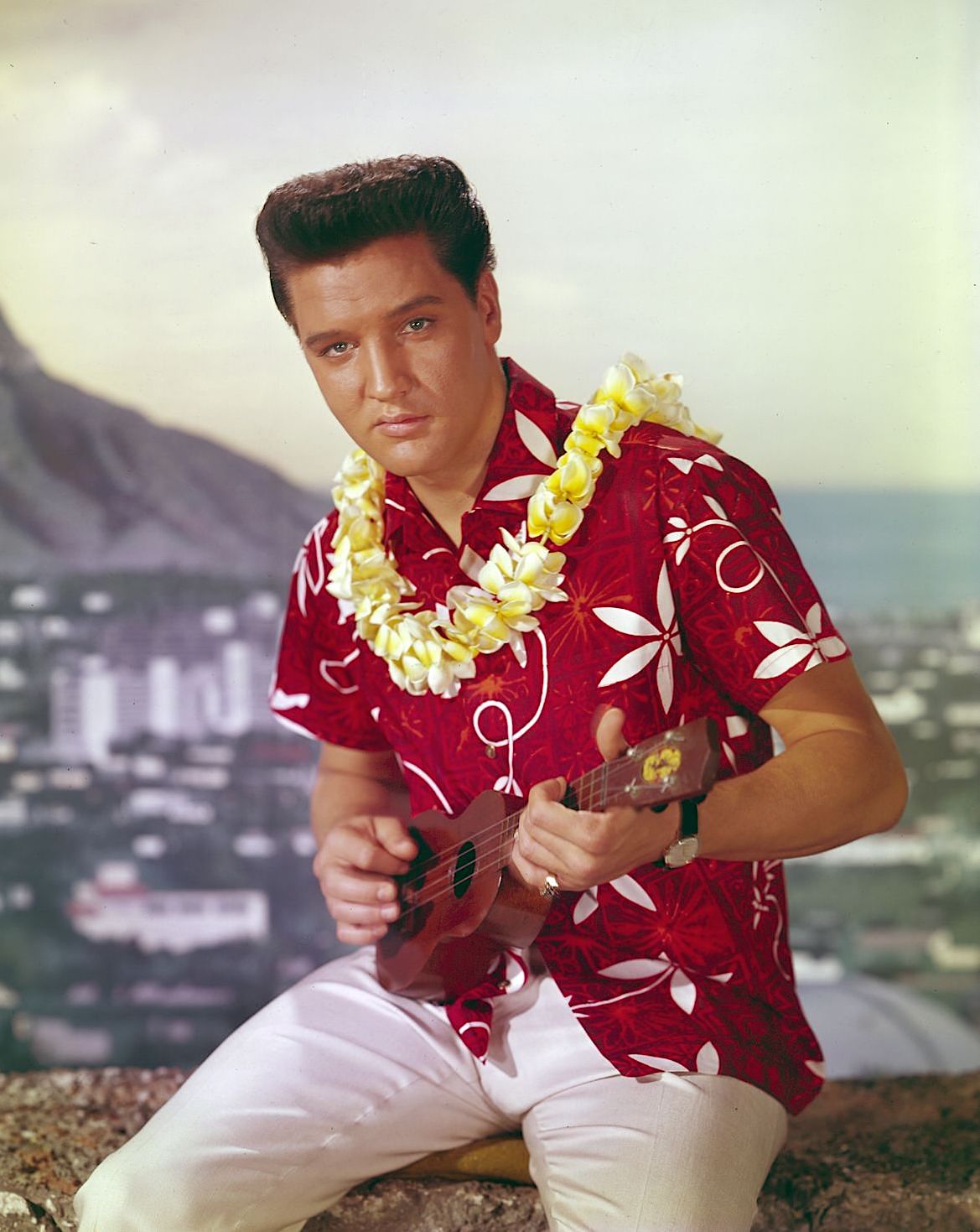
Presley’s career is undoubtedly a moment in pop-culture history that will never be forgotten. It is estimated that he had sold more than one billion records worldwide. From vinyl to cassettes and CDs, his album and singles received strong sales and support upon release. Although his influence reached an international level, he was able to achieve 150 albums and singles that were certified gold, platinum or multi-platinum in America alone.
The rockstar was also generous with his riches as he was known for spontaneously giving away cars, cash, and jewellery. He was involved in a number of charities by raising thousands of funds through music sales and live performances. In 1961, Presley had raised over $75,000 for the Kui Lee Cancer Fund in Hawaii through performances and merchandise sales. Additionally, for many years, Presley would annually donate $1,000 or more to 50 charities in the Memphis area as well as around the country. Likely influenced by his humble upbringing, Presley was a charitable star.
The dark side of a beaming star
Like many celebrities who rose to fame, controversy was bound to unfold. For Presley, however, there was a much darker and twisted side to the star that raised many concerns, mainly from adults and parents of his young supporters. The swag that Presley exuded attracted a fanbase made up of mostly impressionable teenage girls who did not know any better, and was ultimately charmed by his good looks and talents. Unfortunately for some of these young girls, they will soon find out the twisted truth behind the man they worshipped.
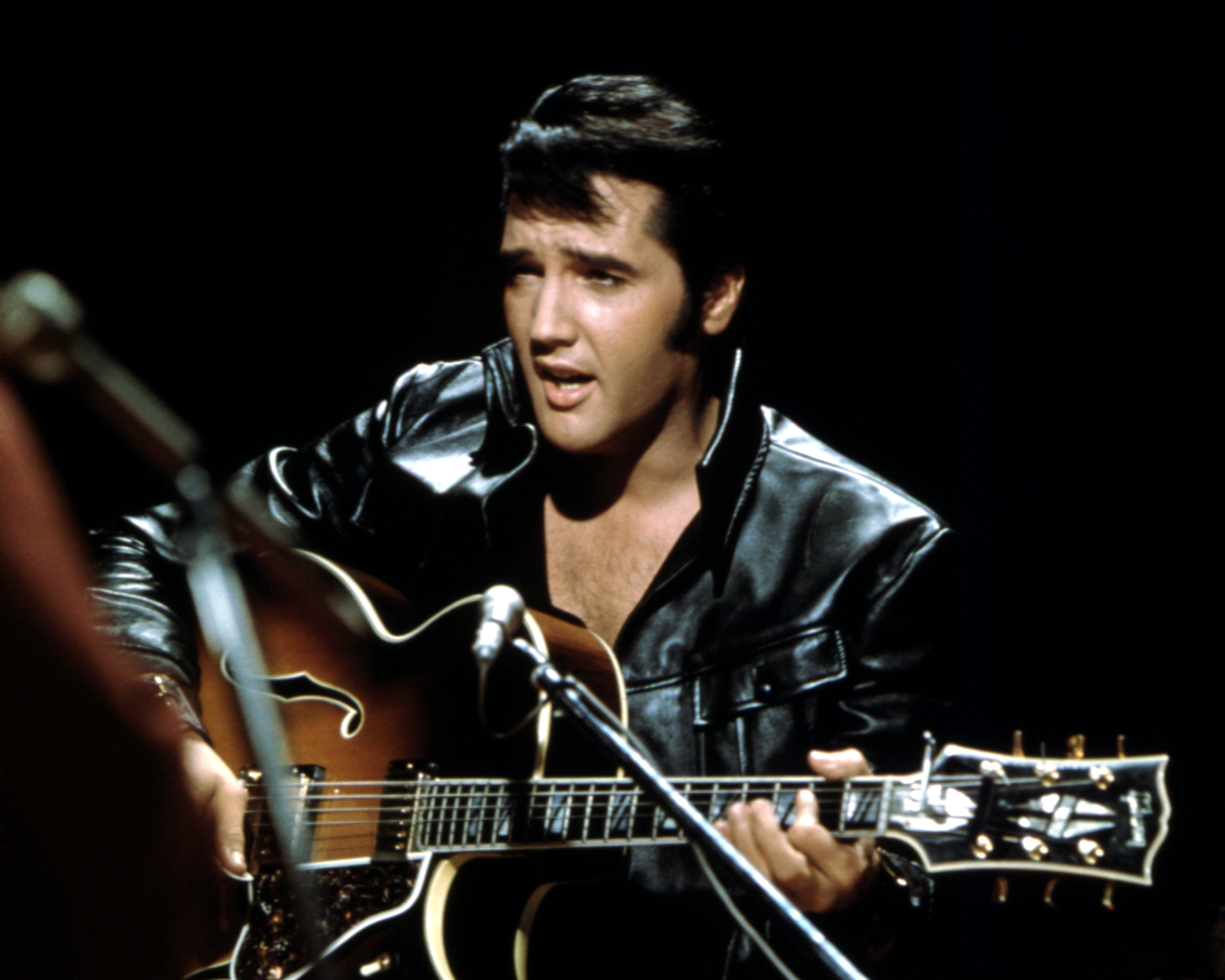
Under the glitzy ensemble and slicked-up quiff was a man with dark fantasies that resulted in the sexual exploitation of young teenage girls and his harmful misogynistic ways of treating women as sexual objects at his disposal. To start, Priscilla Presley was only 14-years-old when she met Presley who was 24-years-old at the time. Presley would also go on to introduce his young partner to drugs so she could ‘keep up’ with his lifestyle.
Times were different in those days and disturbingly enough, underage relationships were common especially amongst the biggest pop-stars. However, a grown man in his twenties having a romantic relationship with a young girl of only 14, was just as concerning and controversial then as it is now. Presley was aware of this. Yet, he continued to give in to his odd obsession with virginity. Another individual by the name of Frances Forbes who hung around the star’s house when she was 13, stated that Presley would not be interested in her, let alone notice her, until she turned 14. “14 was a magical age with Elvis. It really was,” Forbes said.
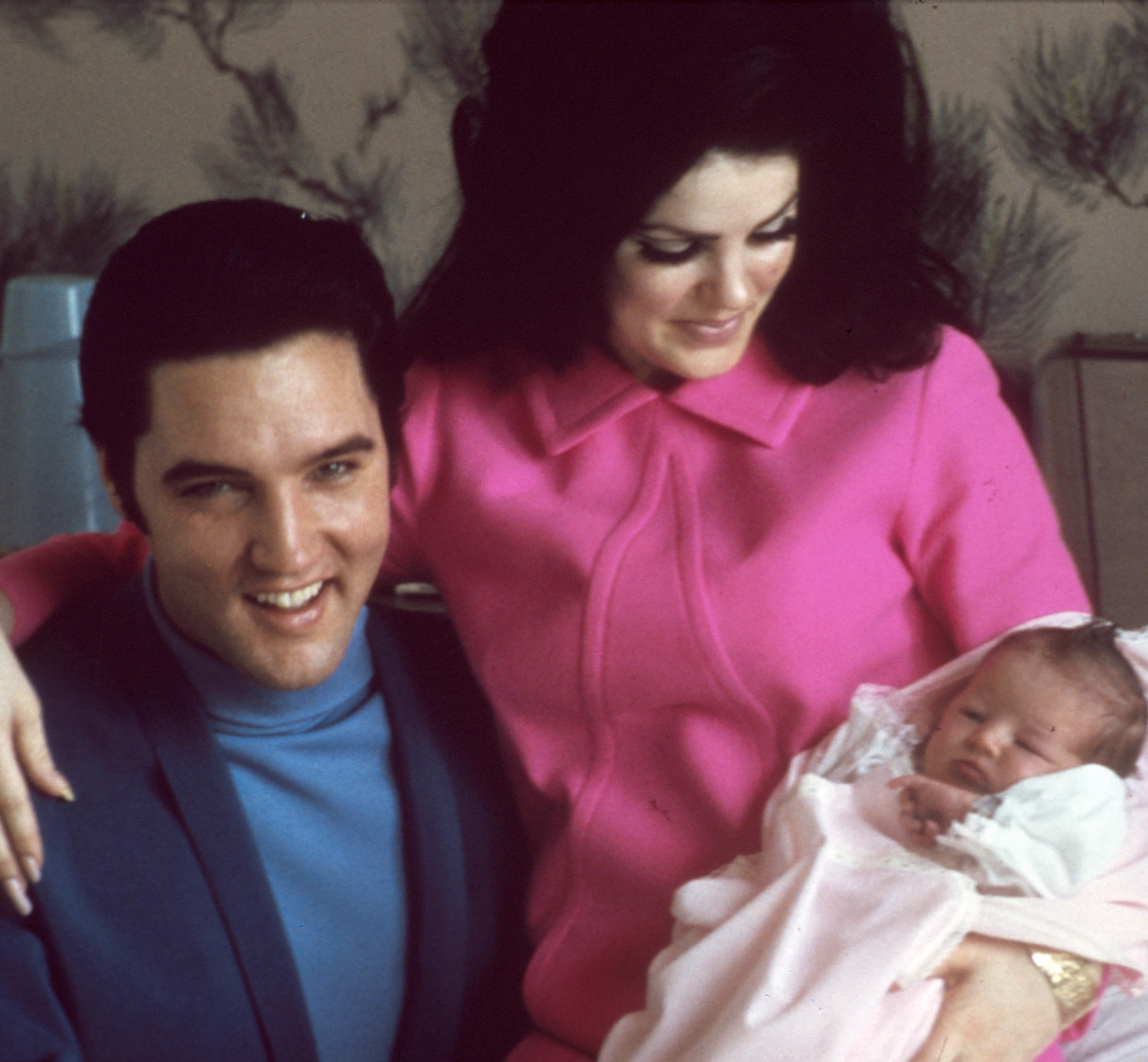
Priscilla Presley later revealed in an interview that Presley had mentioned to her that “he had never been able to make love to a woman who had a child.” He remained true to his statement after his wife had given birth to their only child, Lisa Marie Presley. This complicated predicament led to the eventual affair that Priscilla Presley had, which resulted in their divorce. In her memoir, Elvis and Me, Priscilla Presley writes that upon hearing her confession of the affair, Presley had grabbed her and forcefully made love to her, saying, “This is how a real man makes love to his woman.”
Aside from his obsession with young girls, Presley also had an uncontrollable rage that would typically lead to violent outbursts involving firearms. Priscillla Presley stated, “If he saw somebody he didn’t like on TV, he’d get his gun out and blow it up.”
His last fiancé, Ginger Alden—who also wrote a memoir discussing their relationship—revealed that Presley had fired a gunshot in her direction as she was driving off after an argument. On another occasion, Presley fired a 57 Magnum Pistol off in their bedroom, hitting right above the headboard, after Alden had told him, “I don’t think you need any more yogurt” when he was on a yogurt craze. He later went on to say, “It was an attention-getter.”
Alden described how she was in shock and extremely hurt, but also accepted his apology as she sensed that Presley was genuinely sorry. Yet, not long after, Presley shot up his bathroom and blasted it to smithereens with his machine gun as he was so enraged by his running toilet.
The deterioration and eventual demise of a legend
It was clear that Presley was a troubled man. Likely from the pressures of fame, the star faced many battles that soon led to his tragic death. Like many of us, he seemed to find comfort in food and often ate his emotions away. However, his comfort would spiral into extremely unhealthy eating habits and a diet that shocked many.
Presley had a penchant for meat, peanut butter, and fried foods. He was a creature of habit and his favourite dish was meatloaf. According to Priscilla Presley, he shared such an intense liking for meatloaf that he would eat it every day for dinner for six months straight. For context, the average person’s recommended calorie intake is generally around 2,000 to 3,000 a day. Presley’s daily calorie intake was a lethal 10,000 to 12,000 calories that involved his usual Fool’s Gold Loaf, fried banana sandwiches, fried biscuits, bacon-wrapped meatballs, chicken fried steak, jelly doughnuts, and vegetables saturated with butter and salt.
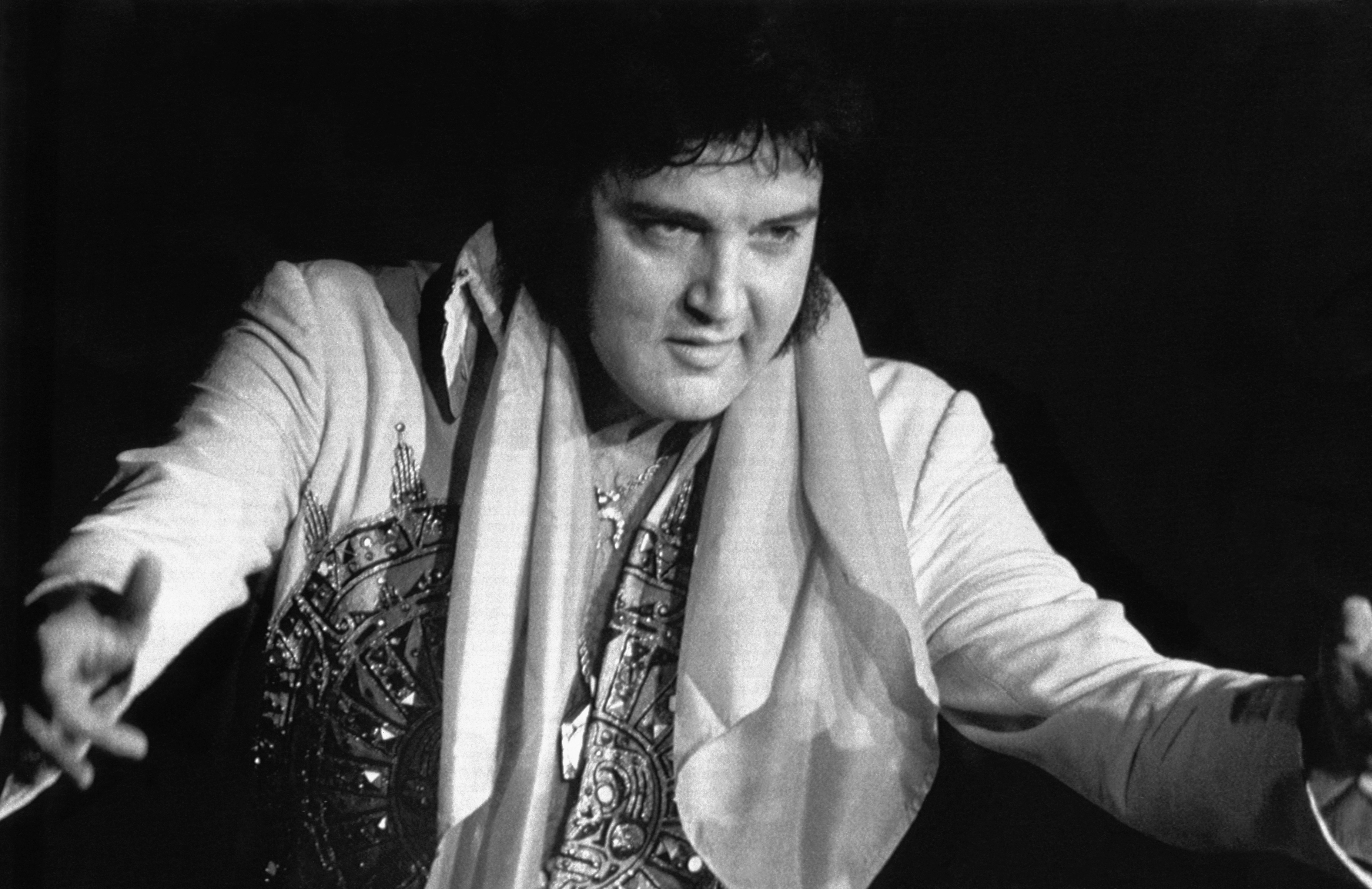
Food was not the only factor that contributed to his deteriorating health. Similar to many late celebrities, Presley succumbed to drug abuse. He had a particular fondness for prescription drugs that began back in the early 1960s.
Struggling with his strenuous work schedule, the star relied on amphetamines to get him going during the day and barbiturates to help him relax at night. Other prescriptions that Presley was known to have taken to help him cope includes Dilaudid, Percodan, Eskatrol, Amobarbital, Quaaludes, Carbrital, Seconal, Methadose, Ritalin, among many others.
Expectedly, Presley’s drug abuse had given him near-fatal overdoses at least twice and was admitted into hospitals for detoxification. Although he managed to survive, luck was running out, and he was once again standing at death’s door.
In the afternoon of 16 August 1977, Ginger Alden found Presley lying unconscious on the floor in his Graceland mansion and was quickly rushed to the Baptist Memorial Hospital. After many failed attempts of revival, Elvis Aaron Presley was pronounced dead at 3.30pm. He was only 42.
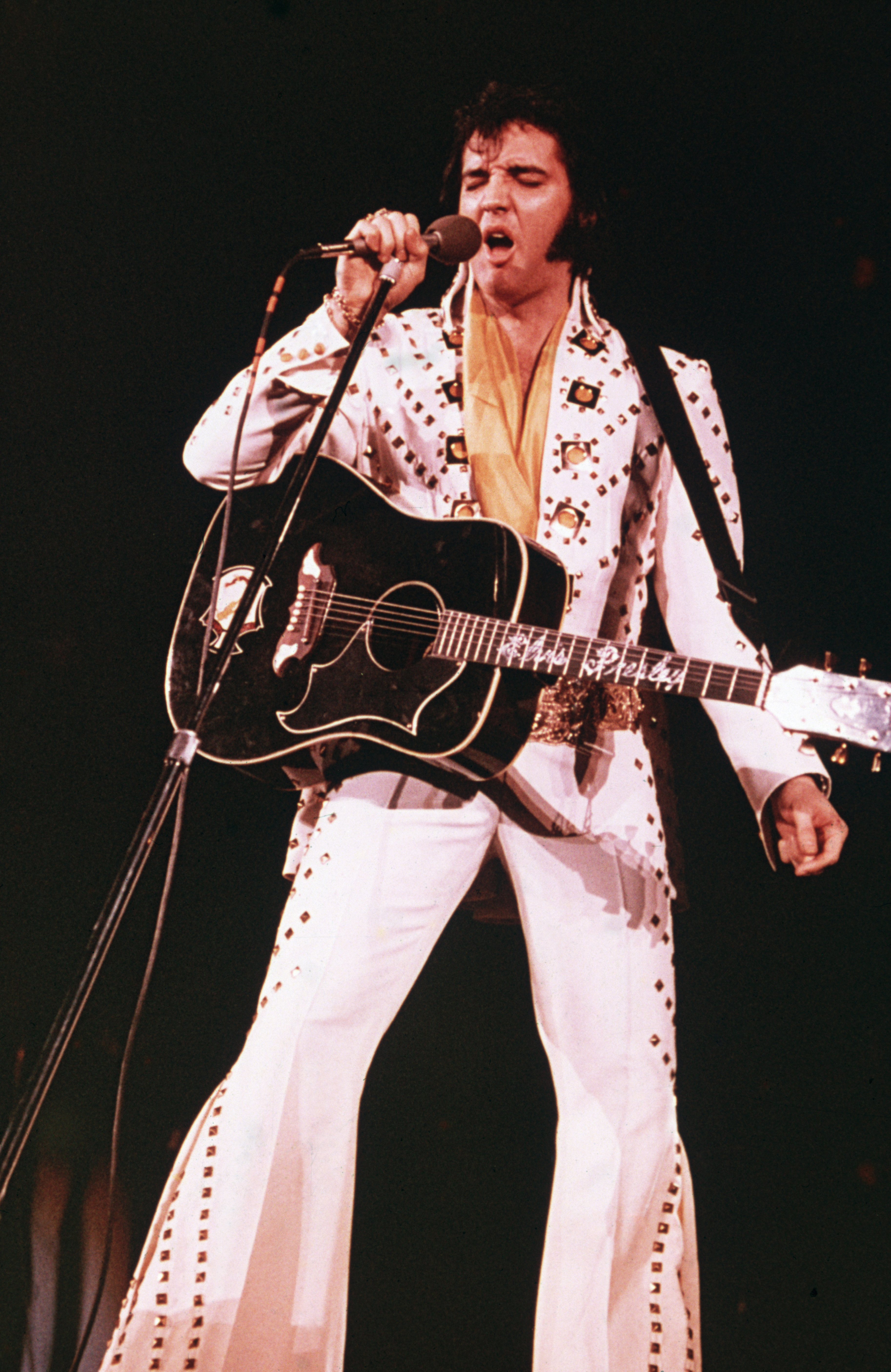
Presley’s death was ruled a heart attack, likely resulting from the star’s longstanding and severe drug abuse. His toxicology analysis showed extremely high doses of Dilaudid, Percodan, Demerol, as well as Quaaludes and codeine. However, as you might expect, drugs were not the only cause.
Presley had a long list of health complications and his diet was no help. In the late years of his life, Presley had gained a substantial amount of weight, totalling up to 159 kilogrammes. He also came to neglect his hygiene and refused to bathe throughout 1975, causing him to develop sores on his body. His autopsy had been legally sealed for fifty years, even so, his visible deterioration made it clear that he was in a gruelling battle with his health.
At present time, Elvis Presley remains under the grounds of the Graceland mansion. His grave is placed near Gladys Presley, Vernon Presley, and his grandmother, Minnie Mae Hood Presley. Decades after Presley’s death, his legacy continues to influence the music industry. Despite his many questionable choices and controversies, it is undeniable that Presley was a cultural icon—and still is today.
Watch the thrilling new biopic, Elvis (played by Austin Butler), out in cinemas from 23 June 2022.
To read more on pop-culture, click here.
| SHARE THE STORY | |
| Explore More |
